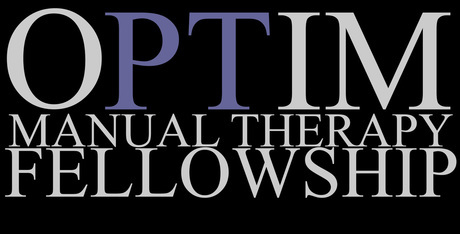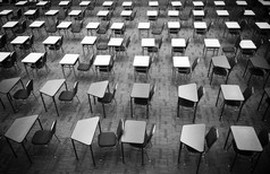- Home
- About Us
- TSPT Academy
- Online Courses
-
Resources
- Newsletter
- Business Minded Sports Physio Podcast
- Day in the Life of a Sports PT
- Residency Corner
-
Special Tests
>
-
Cervical Spine
>
- Alar Ligament Test
- Bakody's Sign
- Cervical Distraction Test
- Cervical Rotation Lateral Flexion Test
- Craniocervical Flexion Test (CCFT)
- Deep Neck Flexor Endurance Test
- Posterior-Anterior Segmental Mobility
- Segmental Mobility
- Sharp-Purser Test
- Spurling's Maneuver
- Transverse Ligament Test
- ULNT - Median
- ULNT - Radial
- ULNT - Ulnar
- Vertebral Artery Test
- Thoracic Spine >
-
Lumbar Spine/Sacroiliac Joint
>
- Active Sit-Up Test
- Alternate Gillet Test
- Crossed Straight Leg Raise Test
- Extensor Endurance Test
- FABER Test
- Fortin's Sign
- Gaenslen Test
- Gillet Test
- Gower's Sign
- Lumbar Quadrant Test
- POSH Test
- Posteroanterior Mobility
- Prone Knee Bend Test
- Prone Instability Test
- Resisted Abduction Test
- Sacral Clearing Test
- Seated Forward Flexion Test
- SIJ Compression/Distraction Test
- Slump Test
- Sphinx Test
- Spine Rotators & Multifidus Test
- Squish Test
- Standing Forward Flexion Test
- Straight Leg Raise Test
- Supine to Long Sit Test
-
Shoulder
>
- Active Compression Test
- Anterior Apprehension
- Biceps Load Test II
- Drop Arm Sign
- External Rotation Lag Sign
- Hawkins-Kennedy Impingement Sign
- Horizontal Adduction Test
- Internal Rotation Lag Sign
- Jobe Test
- Ludington's Test
- Neer Test
- Painful Arc Sign
- Pronated Load Test
- Resisted Supination External Rotation Test
- Speed's Test
- Posterior Apprehension
- Sulcus Sign
- Thoracic Outlet Tests >
- Yergason's Test
- Elbow >
- Wrist/Hand >
- Hip >
- Knee >
- Foot/Ankle >
-
Cervical Spine
>
- I want Financial Freedom
- I want Professional Growth
- I want Clinical Mastery
|
Ever since the beginning of physical therapy as a profession, physical therapists have been viewed as an ancillary service or extension of the doctor. In years past, this was absolutely true. The training of a physical therapist was far inferior to that of a medical doctor. More recently, the education requirements of physical therapists have increased, leading to a push for access as primary care. Physical therapists are clamoring to be viewed on or near the same level as the medical doctor. Should this be the case? Whether or not physical therapists are prepared for this is debatable. In general, one of the requirements in switching to the doctoral degree was to improve the differential diagnosis skills as a physical therapist. While this has without a doubt improved, the consistency of being able to recognize non-musculoskeletal disorders may not be as great as desired. This can be improved with residency training. Ideally all PT's would go through residency training; however, not nearly enough residencies are available. Maybe there can be some alternative step after PT school that could simulate what doctors go through in their residency training, but be more accessible to PT's. If we want to be viewed on the same level as medical doctors, I believe there is a bigger issue that needs to be addressed - how we treat pain. Much of the recent research regarding pain science has consistently showed a lack of correlation between anatomical "pathology" and pain. There have been numerous studies showing asymptomatic individuals with pathological findings in their spine and other joints. I bring this up, because many doctors (not just orthopaedic surgeons) continue to attribute pain to the pathoanatomical theory. The relationship between pain and the nervous system is inconsistently understood. Many practitioners misinterpret that pain is a sensation (via "pain fibers") and not realize that it is actually a perception. The studies showing inconsistencies in imaging findings are taken but then interpreted that the findings are only significant if they match the patient's pain complaints. While this is a step in the right direction, it continues to have a pathoanatomical basis. If this were completely true, a patient with L-sided radicular pain would not have complete resolution with repeated loading on the involved side! The pain patients experience is more associated with a hypersensitization of the nervous system and can be managed by finding a way to down-regulate it. Why do I bring up the pain issue? Because the AMA holds a monopoly on the development of health care policy, it is more so the medical profession that must be convinced of physical therapy's ability to increase their direct access. Before we can convince others organizations, we need to have consistency amongst our profession. Many of the "top physical therapists" build their therapeutic model off the pathoanatomical theory as well, leading to professional organizations promoting these ideas. Even as research regularly is coming out that should push us away from that model, many PT's cling to it. There is success with treating via the biomechanical approach, but is it the most effective? In trying to increase the relevance of physical therapy as a profession in primary care, we need to promote the same ideas and philosophies if we expect to be the provider of choice for musculoskeletal pathology. -Chris
Like this post? Then check out the Insider Access Page for advanced content! And check out similar posts below!
5 Comments
J.A.
10/13/2015 12:14:49 pm
Great post, couldn't agree more! I have found some very eye opening articles involving MDT assessment/treatment vs pathoanatomical diagnoses. Would you mind providing some article titles/search terms to additional research? I would love to find some more research to back dialogue with colleagues. Thanks!
Reply
AK
10/14/2015 07:12:37 am
I'm a current student, and love the site.
Reply
Hi AK,
Reply
Glenn
10/14/2015 10:05:30 am
Why do we need a doctorate degree? Maybe some patients will experience greater improvements with the underdog PT relative to all of the medical doctors and specialists who have initially failed to treat their chronic pain. It's more about your personality and how well you communicate with your patient, rather then the status and skills of the profession.
Reply
Colin
10/14/2015 10:29:14 pm
I agree 100% with the rationale that PT professions needs unifying standards of treatment diagnoses and we need to get away from the pathos atomically model and do what we do best, assess the human kinesthetic system and relate it back to function. I actually think most PTs follow this model whether they know it or not.....and we didn't need to acquire doctorate degrees to get there.
Reply
Leave a Reply. |
Dr. Brian Schwabe's NEW Book in partner with PaleoHacks!
Learn residency-level content on our
Insider Access pages We value quality PT education & CEU's. Click the MedBridge logo below for TSPT savings!Archives
July 2019
Categories
All
|









 RSS Feed
RSS Feed